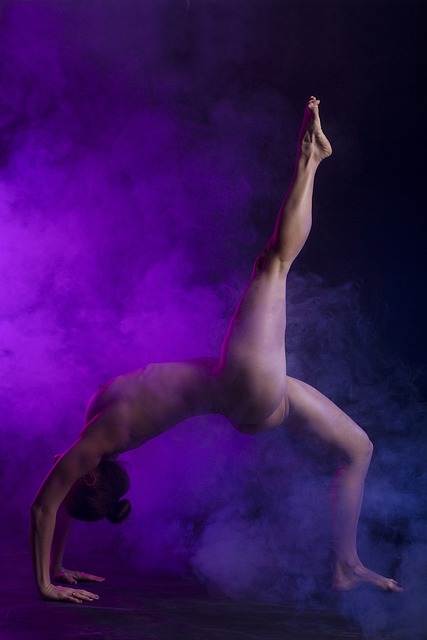# AI Art: Exploring the Intersection of Technology and Imagination in Modern Visual Creation
The advent of artificial intelligence (AI) has ushered in a transformative era for various fields, and the world of art is no exception. As artists and technologists collaborate, a new genre of creative expression is emerging, one that blends human imagination with machine learning capabilities. This article delves into how AI is reshaping the landscape of visual creation, the implications for artists and audiences, and the philosophical questions that arise from this innovative intersection.
## The Evolution of AI in Art
Historically, technology has always played a crucial role in the evolution of art. From the invention of the camera to the rise of digital tools, each technological advancement has redefined artistic practices. In recent years, AI has taken center stage as a powerful tool for artists, enabling them to push boundaries and explore new creative territories. Machine learning algorithms can analyze vast datasets of images, styles, and techniques, allowing AI to generate unique artworks that often challenge traditional notions of creativity.
Moreover, the development of generative adversarial networks (GANs) has further revolutionized the art scene. These systems consist of two neural networks—the generator and the discriminator—that work in tandem to create and evaluate images. Through this process, AI can produce artworks that mimic the styles of renowned artists or create entirely new visual languages. This capability not only democratizes art creation but also raises questions about originality and authorship in a digital age.
## The Role of Artists in the AI Art Movement
While AI can generate art autonomously, the role of the artist remains crucial. Many contemporary artists are embracing AI as a collaborative partner rather than a replacement. By integrating AI into their creative processes, artists can explore novel concepts and techniques that might have been previously unimaginable. For instance, some artists utilize AI to analyze their own styles, leading to innovative reinterpretations of their work. This collaboration fosters a dialogue between human intuition and machine-generated output, resulting in a rich tapestry of artistic expression.
In addition, the relationship between artists and AI is evolving into a new form of authorship. Artists are not merely passive users of technology; they are actively shaping the parameters and algorithms that guide AI-generated art. This dynamic partnership encourages artists to think critically about the implications of their work and the technology behind it. As a result, the creative process becomes a blend of human insight and computational power, allowing for a more expansive exploration of themes and ideas.
## The Impact on Audiences and the Art Market
The rise of AI-generated art is also influencing how audiences perceive and engage with visual creation. Traditional art forms often emphasize the artist’s individual touch and emotional expression. However, as AI-generated pieces gain prominence, viewers are confronted with new questions about the nature of art itself. Is an artwork less valuable if it is created by an algorithm? Can AI-generated pieces evoke the same emotional responses as those crafted by human hands? These inquiries challenge established norms in the art world and invite audiences to reconsider their definitions of creativity and artistic merit.
Moreover, the art market is beginning to adapt to the influx of AI art. Auctions featuring AI-generated pieces have attracted significant attention, with some works selling for substantial sums. This shift reflects a growing acceptance and appreciation of AI as a legitimate medium of artistic expression. However, it also raises concerns about commodification and the potential for AI art to overshadow traditional practices. As the market evolves, artists, collectors, and institutions must navigate the complexities of valuing AI-generated art alongside more conventional works.
## Ethical Considerations and the Future of AI Art
As AI continues to influence the art world, ethical considerations come to the forefront. The use of AI raises questions about copyright, ownership, and the potential for bias in algorithmic outputs. For instance, if an AI generates a piece of art based on existing works, who holds the rights to that creation? Artists and technologists must engage in thoughtful discussions about these issues to establish a framework that respects both human creativity and the capabilities of AI.
Looking ahead, the future of AI art appears promising yet complex. As technology advances, the possibilities for creative exploration will expand, allowing artists to experiment with new forms and mediums. However, the challenge will be to maintain a balance between the benefits of AI and the intrinsic value of human creativity. As the lines between artist and machine blur, it becomes increasingly important to foster a dialogue that emphasizes collaboration and ethical considerations.
## Conclusion
AI art represents a fascinating convergence of technology and imagination, reshaping the landscape of visual creation in profound ways. As artists harness the power of AI to expand their creative horizons, audiences are invited to engage with art in new and thought-provoking manners. While the implications of this transformation are still unfolding, one thing is clear: the intersection of AI and art is not merely a trend but a significant evolution in the way we understand and appreciate creativity. The ongoing dialogue between human artists and AI will undoubtedly continue to shape the future of art, prompting us to rethink our perceptions of creativity, originality, and the very essence of what it means to be an artist in the 21st century.

